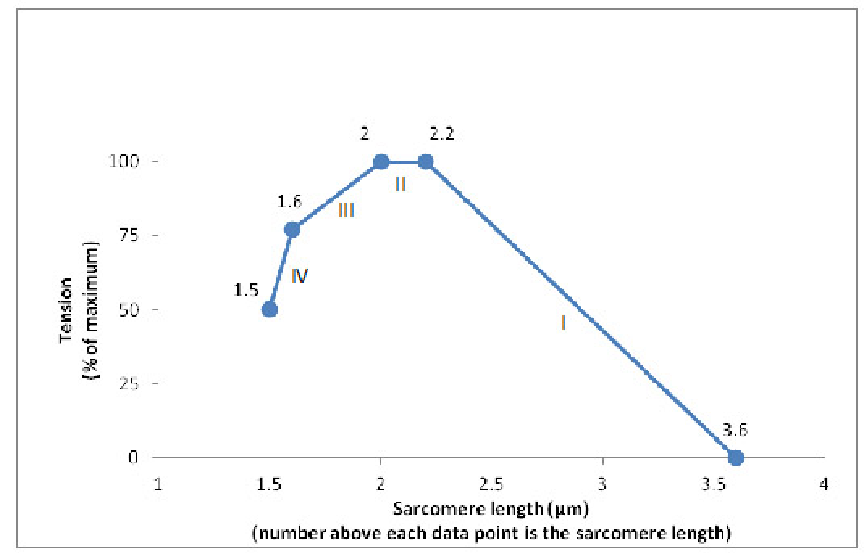Rabbits and rodents are the reservoirs of the causative agent of
What will be an ideal response?
Tularemia.
You might also like to view...
The sliding filament model for muscle contraction can be studied using an isolated skeletal muscle that is fixed at each end, while a machine records the tension that is generated when the muscle is stimulated to contract. In one particular muscle tested, the length of the thick filaments was 1.6 mm and the length of the thin filaments that project in from each Z line towards the center of the sarcomere was 1.0 mm. A summary of the results comparing sarcomere length to the degree of tension produced during contraction is shown below. What most likely explains the difference between segment II and segment III of the graph?

A. The muscle cells used up all the ATP by the end of segment II.
B. The length of the thin filaments is decreasing in segment III but not in segment II.
C. There is an increasing overlap of the free ends of the thin filaments in segment III but not in segment II.
D. The length of the thick filaments is decreasing in segment III but not in segment II.
E. The distance between the Z lines is constant in segment II but rapidly increasing in segment III.
F. Fewer myosin cross-bridges are forming in segment II than in segment III.
Clarify Question
· What is the key concept addressed by the question?
· What type of thinking is required?
Gather Content
· What do you know about the correlation between sarcomere length and tension? What other information is related to the question?
Choose Answer
· Given what you now know, what information is most likely to produce the correct answer?
Reflect on Process
· Did your problem-solving process lead you to the correct answer? If not, where did the process break down or lead you astray? How can you revise your approach to produce a more desirable result?
What happens to lymph?
a. it is returned to veins near the heart b. it is stored in the spleen c. it is returned to venules near capillary beds d. it is returned to arterioles near capillary beds e. it is expelled from the body by the kidneys
Which of the following statements is true regarding the male urethral biota?
A. The urethral biota in the male is exactly the same biota as in the female urethra. B. The urethral biota is the same as the anal biota. C. There are no resident biota in the urethra. D. The urethral biota varies with sexual activity of the male.
Replacing a patient's defective gene with a fragment containing a functional gene is
A. gene therapy. B. genomics. C. gene cloning. D. gene mapping. E. gene selection.